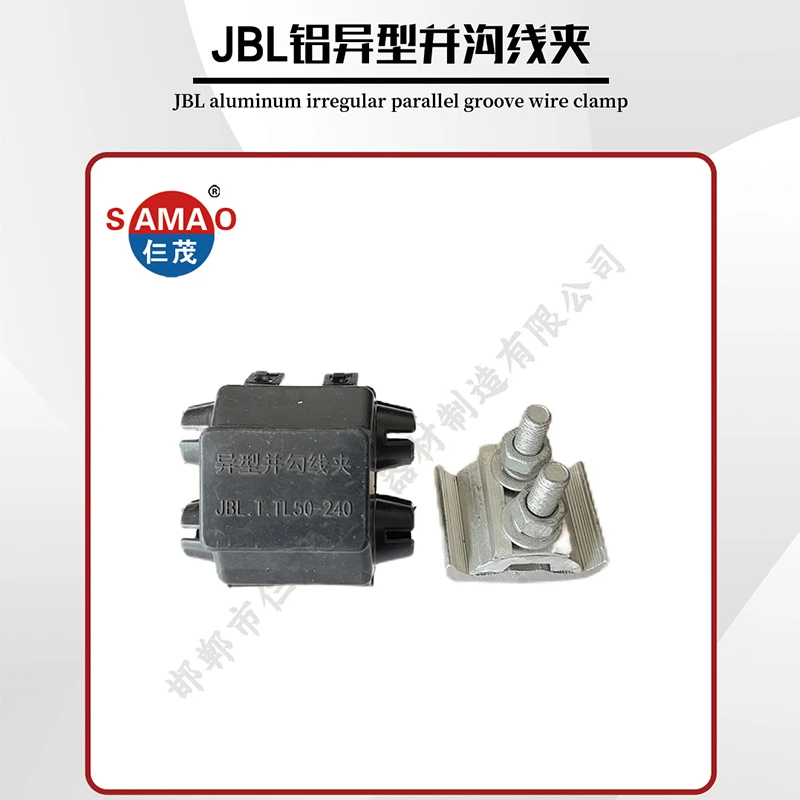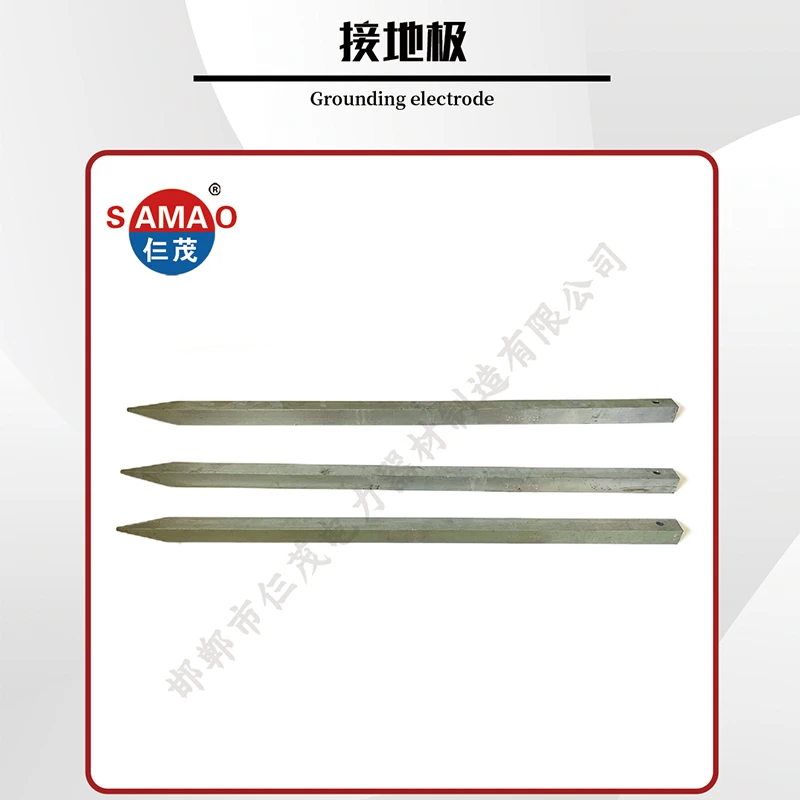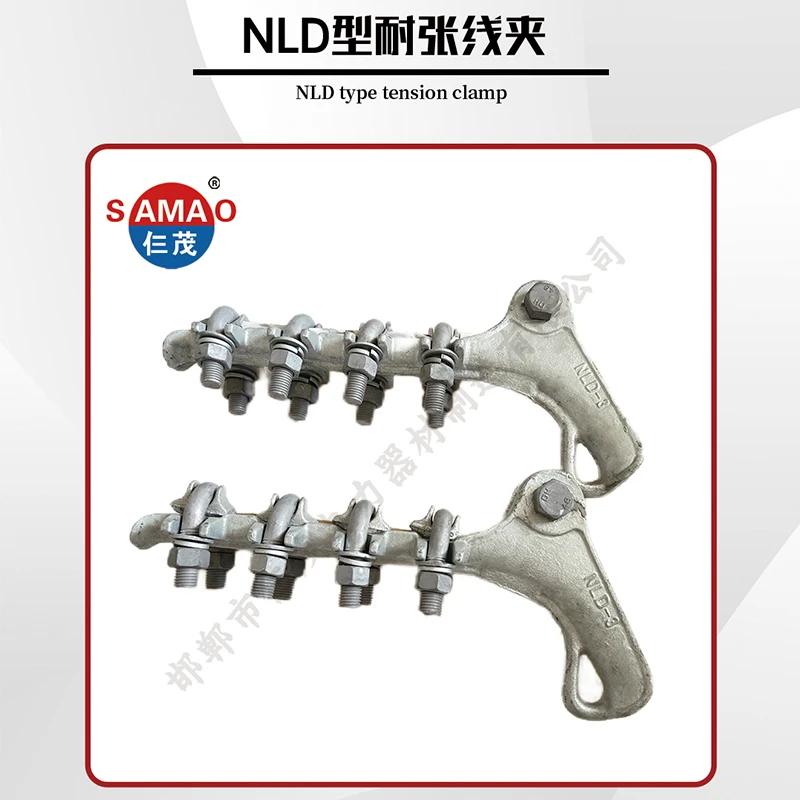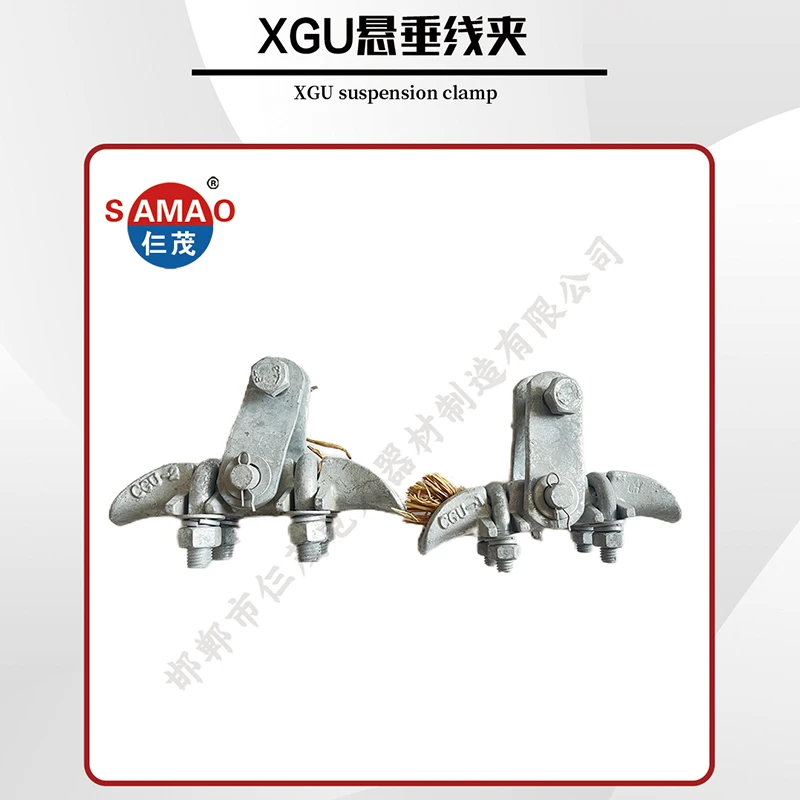Durable Wire Cable Stop Clamp | Tension Lock & Strain Relief
Understanding the Critical Role of wire cable stop clamp in Industrial Applications
In the vast and complex landscape of modern industrial infrastructure, the integrity and reliability of cable systems are paramount. From power transmission lines crisscrossing continents to intricate wiring within advanced machinery, the secure termination and anchoring of cables are non-negotiable for operational safety and efficiency. This is precisely where the wire cable stop clamp plays a pivotal, often unsung, role. Functioning as a critical component, these clamps are engineered to provide robust mechanical support, preventing axial movement and ensuring the cable remains firmly in its designated position, even under extreme environmental conditions or dynamic loads. They are indispensable in applications demanding precise cable management and high tensile strength retention, serving as the literal backbone for countless systems. The evolution of industrial demands, particularly the increasing reliance on automation, renewable energy integration, and robust data transmission networks, has only amplified the necessity for increasingly durable, versatile, and high-performance wire cable stop clamp solutions. Manufacturers today are pushing the boundaries of material science and design innovation to produce clamps that not only meet but exceed stringent international standards, offering enhanced longevity, superior corrosion resistance, and optimized installation procedures, thereby reducing downtime and maintenance costs across diverse sectors globally. The strategic deployment of these advanced clamping solutions is a testament to the ongoing commitment of industries to safety, operational resilience, and long-term infrastructure investment.
The demand for reliable cable management solutions continues to surge across various sectors, driven by infrastructure expansion, digitalization, and the increasing complexity of industrial operations. Industries such as telecommunications, power utilities, construction, and manufacturing are constantly seeking robust and efficient methods to secure cables, ensuring uninterrupted service and safety. The market for products like the wire cable stop clamp is experiencing steady growth, propelled by technological advancements in materials science and manufacturing processes that enable the production of clamps with superior tensile strength, enhanced corrosion resistance, and extended service life. Innovations are focused on creating lighter yet stronger alloys, developing advanced surface treatments for improved durability, and designing ergonomic features that simplify installation and maintenance. Furthermore, the global shift towards renewable energy sources, particularly wind and solar farms, where cables are exposed to harsh outdoor environments and dynamic stresses, significantly contributes to this demand. These applications require specialized clamps capable of withstanding high wind loads, extreme temperatures, and persistent vibrations, pushing manufacturers to innovate beyond conventional designs. Regulatory compliance and adherence to international safety standards, such as ISO, ANSI, and ASTM, also play a crucial role in shaping market trends, driving companies to invest in certified and rigorously tested products. The integration of smart monitoring capabilities within clamping systems, although nascent, represents a future trend, promising real-time performance data and predictive maintenance insights, thereby further enhancing the reliability and cost-effectiveness of cable infrastructure.
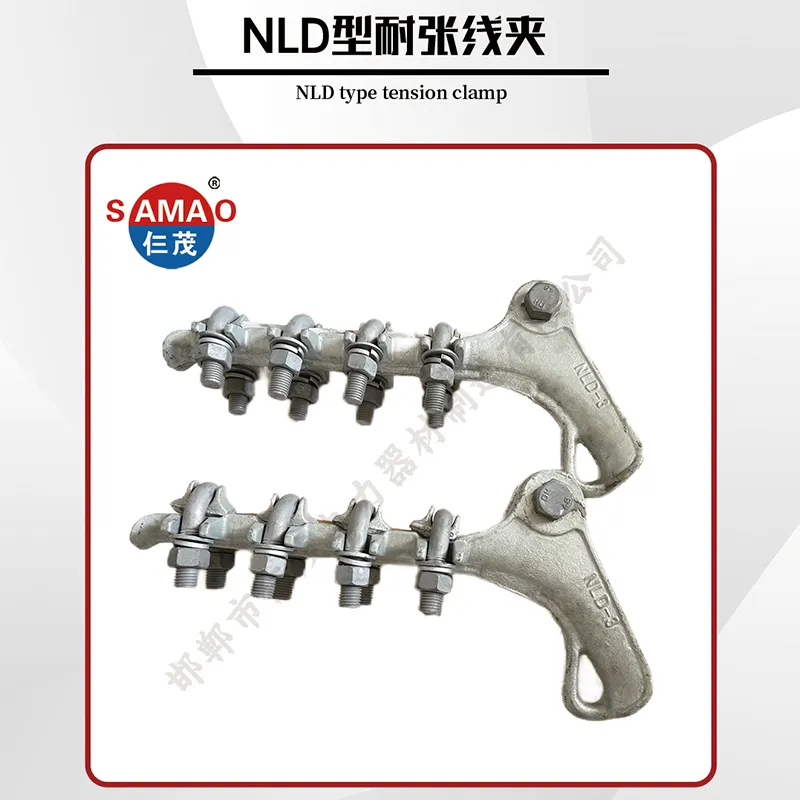
The Advanced Manufacturing Process of a Robust Wire Cable Stop Clamp
The production of a high-performance wire cable stop clamp is a testament to precision engineering, involving a multi-stage manufacturing process designed to ensure unparalleled durability, functional integrity, and long-term reliability. This intricate journey begins with the meticulous selection of raw materials, primarily high-grade alloys such as galvanized steel, stainless steel (e.g., 304, 316 for enhanced corrosion resistance), aluminum alloys, or specialized copper alloys, depending on the specific application's environmental conditions and mechanical stress requirements. The choice of material is critical as it dictates the clamp's tensile strength, fatigue resistance, and ability to withstand aggressive corrosive agents prevalent in harsh industrial environments like petrochemical plants or coastal utility grids. Following material procurement, the manufacturing typically proceeds through stages like precise cutting of raw stock, which ensures optimal material utilization and preliminary sizing for subsequent processes. This initial preparation sets the foundation for either casting or forging, two primary methods for shaping the raw material. Forging, involving high-pressure mechanical deformation, imparts superior grain structure and greater strength to the material, making the clamp highly resistant to impact and fatigue, suitable for critical load-bearing applications. Casting, conversely, allows for more complex geometries and can be more cost-effective for certain designs, particularly for components that require intricate internal structures or specialized features. Both methods are followed by precise machining operations, including CNC (Computer Numerical Control) machining, which guarantees exact dimensions and tight tolerances, critical for a secure grip and proper fit. CNC machining ensures that every groove, hole, and surface finish meets stringent specifications, eliminating any potential stress concentrations that could compromise the clamp's performance under load.
Post-machining, the clamps often undergo various surface treatments and finishing processes to enhance their protective qualities and operational lifespan. This can include hot-dip galvanization for steel clamps, providing a thick, durable zinc coating that offers sacrificial corrosion protection, highly effective in outdoor or chemically exposed environments. Anodizing is common for aluminum clamps, creating a hard, corrosion-resistant oxide layer. Specialized coatings, such as polymer-based or ceramic coatings, may also be applied to offer additional protection against UV radiation, abrasion, or specific chemical exposures. Quality control and rigorous testing protocols are integrated at every stage of the manufacturing process to ensure compliance with international standards such as ISO 9001 for quality management, ANSI (American National Standards Institute) standards for performance, and ASTM (American Society for Testing and Materials) for material properties and testing methodologies. These tests include tensile strength testing to verify load-bearing capacity, salt spray testing to assess corrosion resistance, hardness testing, and dimensional verification using advanced metrology equipment. For a tension lock clamp or a strain clamp for overhead line, adherence to these standards is not merely a formality but a critical determinant of safety and reliability, preventing catastrophic failures that could lead to widespread power outages or industrial accidents. The expected service life of a well-engineered wire cable stop clamp can range from 20 to 50 years, largely dependent on the material, manufacturing quality, and environmental conditions. These clamps are indispensable across a multitude of industries including petrochemical, for securing pipelines and process control cables; metallurgy, within heavy machinery and crane systems; power generation and distribution, for overhead lines and substation equipment; and civil infrastructure projects, particularly in bridge construction and building support systems for securing structural cables. In applications like municipal water supply and drainage systems, where components are frequently exposed to corrosive elements or underground moisture, the superior corrosion resistance of high-grade clamps ensures long-term operational integrity and significantly reduces maintenance cycles, contributing to substantial energy savings by preventing losses due to system failures and reducing the need for frequent replacements.
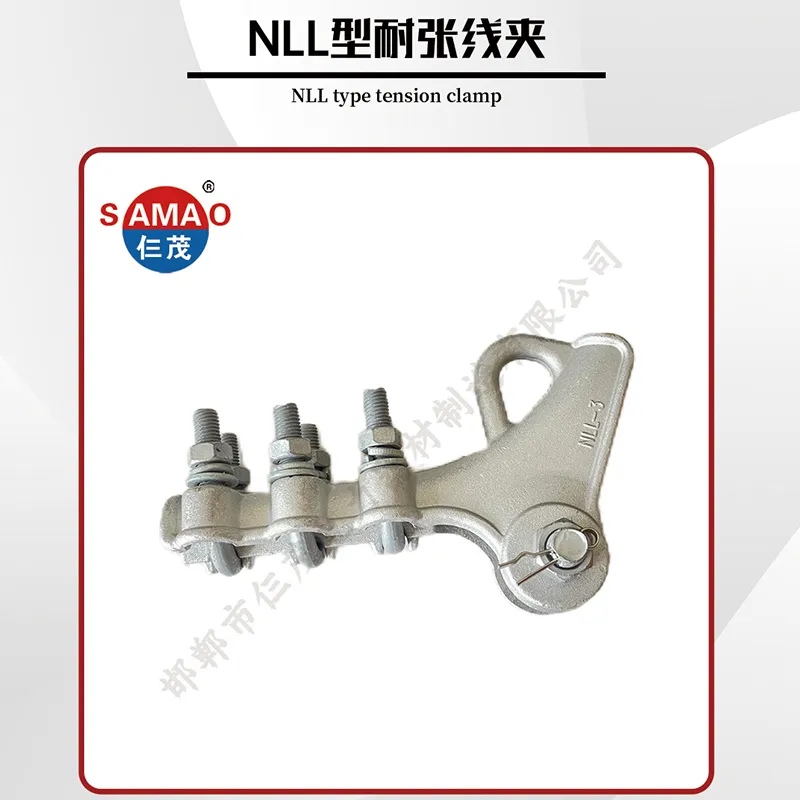
Technical Parameters and Specifications of Wire Cable Stop Clamps
Selecting the appropriate wire cable stop clamp requires a thorough understanding of its technical parameters, which dictate its suitability for specific applications and operational environments. These parameters are not merely numbers; they represent the clamp's engineered capabilities and limitations, directly impacting system reliability and safety. Key specifications typically include the clamp's rated tensile strength, which indicates the maximum load it can withstand before deformation or failure. This is often expressed in kilonewtons (kN) or pounds-force (lbf) and is a critical metric for applications involving significant mechanical tension, such as overhead power lines or heavy lifting equipment. Another vital parameter is the compatible cable diameter range, ensuring a precise and secure fit without causing damage to the cable insulation or conductors. A mismatch in diameter can lead to slippage, insulation damage, or an inadequate grip, compromising the system's integrity. Material composition, as discussed previously, is fundamental, detailing the specific alloy used (e.g., galvanized steel, stainless steel grades like 304/316, aluminum alloys) and often specifying their respective mechanical properties such as yield strength and ultimate tensile strength. Surface treatment, such as hot-dip galvanization thickness (measured in microns) or anodization details, is crucial for assessing corrosion resistance and expected lifespan in corrosive atmospheres. Additionally, temperature operating range specifies the ambient temperature extremes the clamp can endure without degradation of its material properties or structural integrity, a vital consideration for applications in deserts, polar regions, or high-temperature industrial processes.
Beyond these primary technical characteristics, design specifics also play a significant role. This includes the clamp's overall dimensions, weight, and mounting configuration, which influence ease of installation and compatibility with existing infrastructure. For specialized clamps like a strain clamp for overhead line, parameters such as creep resistance, vibration fatigue limits, and short-circuit current ratings (for electrical applications) are paramount. Creep resistance is critical for maintaining long-term tension in conductor lines, preventing sag over time, while vibration fatigue limits ensure the clamp can withstand constant environmental oscillations without structural degradation. Short-circuit current ratings are essential for preventing thermal damage to the clamp during electrical faults, maintaining its mechanical integrity. Performance standards, such as adherence to ISO 1461 for hot-dip galvanized coatings or ANSI C119.4 for electrical connectors, provide an objective benchmark for quality and performance. Furthermore, some high-performance cable relief clamp designs may feature specific torque requirements for installation, ensuring optimal clamping force without over-tightening or under-tightening, which could lead to either material fatigue or insufficient grip. The combination of these parameters allows engineers and procurement specialists to meticulously match the clamp's capabilities with the project's specific demands, guaranteeing maximum operational efficiency, safety, and longevity of the cable system. Below is a representative table outlining typical parameters for various types of wire cable stop clamps, illustrating the diversity in design and performance across different applications.
| Parameter | Type 1: General Purpose Wire Cable Stop Clamp | Type 2: Heavy-Duty Tension Lock Clamp | Type 3: Overhead Line Strain Clamp |
|---|---|---|---|
| Material | Hot-dip Galvanized Steel | Forged Steel (Galvanized/Stainless 316) | Aluminum Alloy (AA6061-T6), Steel Bolts |
| Rated Tensile Strength (Ultimate) | 50 kN - 150 kN | 200 kN - 500 kN+ | 70 kN - 300 kN |
| Cable Diameter Range | 6 mm - 25 mm | 20 mm - 70 mm | 10 mm - 50 mm (ACSR, AAAC, AAC) |
| Corrosion Resistance | Good (500 hrs salt spray per ASTM B117) | Excellent (1000 hrs+ salt spray for SS; 700 hrs+ for Galvanized) | Very Good (Self-passivating oxide layer) |
| Operating Temperature | -40°C to +80°C | -50°C to +120°C | -60°C to +150°C |
| Applicable Standards | ISO 9001, ASTM A153 | ANSI C119.4, IEC 61284, EN 50341 | NEMA CC 1, ASCE Manuals, ISO/TS 16949 |
| Typical Lifespan | 20-30 years | 30-50 years+ | 40-60 years |
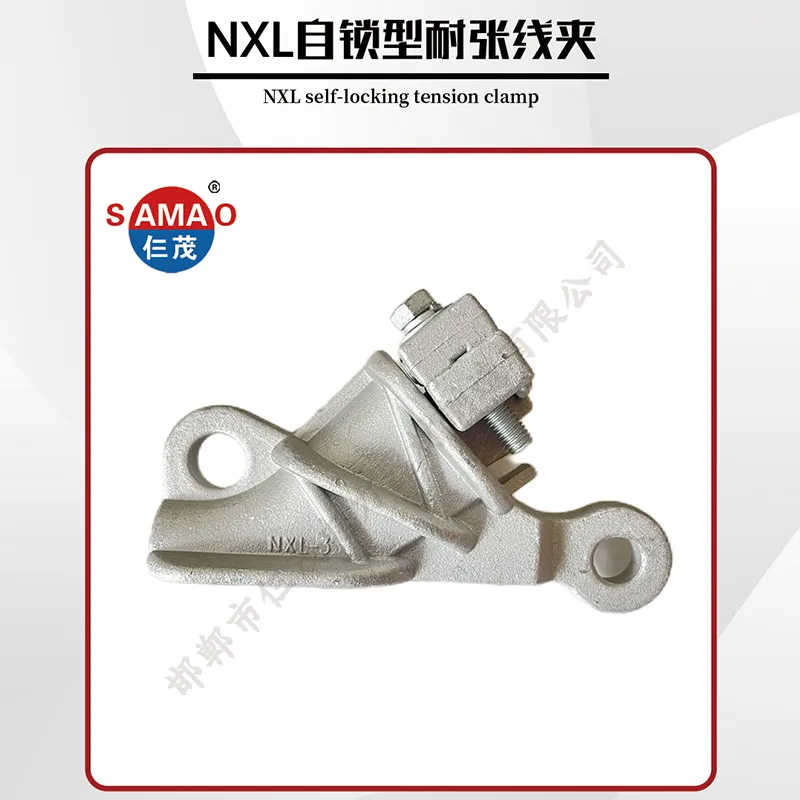
Versatile Application Scenarios and Industry-Specific Demands
The adaptability and robustness of the wire cable stop clamp make it an indispensable component across a remarkably diverse range of industrial sectors, each presenting unique challenges and demanding specialized solutions. In the power transmission and distribution industry, these clamps are fundamental for securing overhead conductors, ensuring consistent tension, and preventing conductor sag, which is critical for maintaining grid stability and minimizing power losses. Specifically, strain clamp for overhead line applications are designed to withstand significant tensile loads and environmental stressors like wind, ice, and temperature fluctuations, crucial for preventing costly outages and ensuring uninterrupted power supply to millions. In telecommunications, particularly for fiber optic and coaxial cable networks, clamps are vital for securing aerial cables to poles and structures, protecting delicate fibers from excessive tension and vibration-induced damage, thereby safeguarding high-speed data transmission. The rapid global expansion of 5G networks and broadband infrastructure has intensified the demand for reliable, corrosion-resistant, and easily installable clamps that can ensure long-term network integrity. The construction industry utilizes these clamps extensively in various structural applications, including pre-stressed concrete structures, bridge cable stays, and architectural rigging, where precise tensioning and absolute security of load-bearing cables are paramount for structural stability and public safety. For instance, in seismic zones, specially designed cable relief clamp systems are employed to absorb and dissipate energy, reducing stress on the main structure.
Within the oil and gas industry, both upstream and downstream operations rely heavily on robust clamping solutions for securing power cables, control lines, and sensor arrays in extremely harsh environments characterized by corrosive chemicals, high temperatures, and explosive atmospheres. Specialized wire cable stop clamp designs for this sector incorporate materials like super duplex stainless steel or nickel alloys, along with explosion-proof certifications, to ensure operational integrity and safety compliance. The marine and offshore sector faces unique challenges from saltwater corrosion, constant movement, and extreme weather, necessitating clamps made from highly corrosion-resistant materials, often with specialized coatings and robust sealing mechanisms to prevent ingress of moisture and contaminants into cable terminations. In mining, where heavy machinery operates in dusty, abrasive, and often underground environments, clamps must endure severe mechanical stress and abrasion while ensuring uninterrupted power and communication to equipment. The manufacturing and automation sectors employ a vast array of cables for robotics, conveyor systems, and process control, requiring compact, precise, and durable clamps that can handle repetitive motion and vibration without loosening. Emerging industries like renewable energy, especially large-scale wind and solar farms, demand clamps that can withstand dynamic loads, UV radiation, and extreme temperatures for securing critical power evacuation cables. Each of these sectors has specific compliance requirements, ranging from electrical safety codes to environmental protection regulations, making the selection of a compliant and high-performance wire cable stop clamp a critical engineering decision, directly impacting the longevity, safety, and operational efficiency of complex industrial systems.
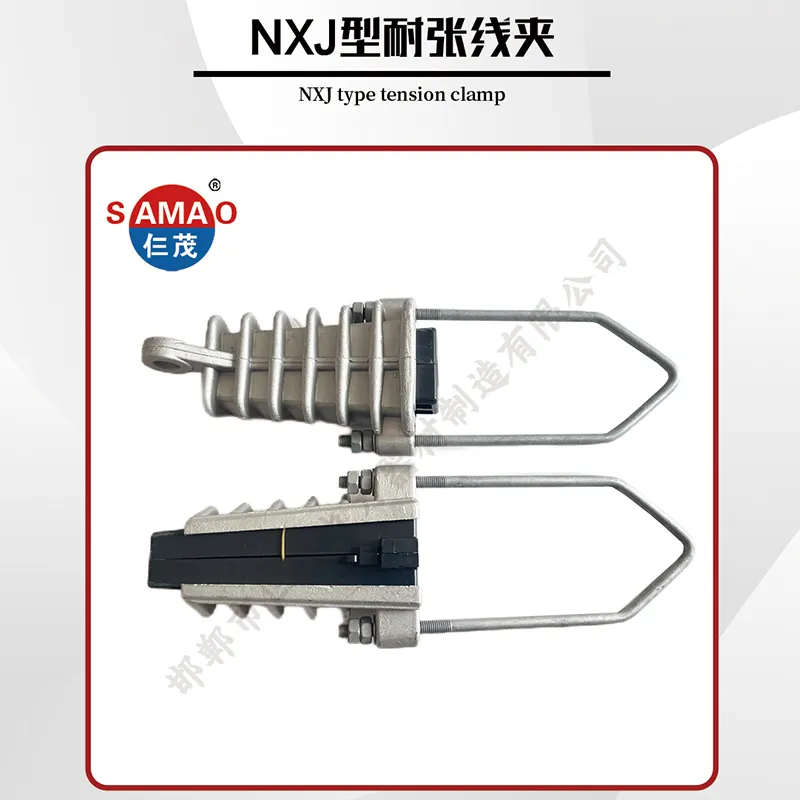
Technical Advantages and Performance Benefits
The advanced engineering and meticulous manufacturing behind modern wire cable stop clamp solutions translate into a suite of significant technical advantages and performance benefits that are critical for long-term operational success and cost efficiency across industrial applications. Foremost among these is their exceptional mechanical stability and load-bearing capacity. Designed to securely anchor cables, these clamps minimize stress on cable terminations and prevent conductor slippage, which is crucial for maintaining electrical continuity and structural integrity. High-tensile strength clamps, often made from forged steel or specialized alloys, can sustain immense axial and radial forces, making them ideal for high-tension applications such as large power transmission lines or heavy-duty rigging. This robust mechanical performance directly contributes to enhanced safety, reducing the risk of catastrophic failures due to cable displacement or breakage. Furthermore, advanced surface treatments, such as hot-dip galvanization or specialized polymer coatings, provide superior corrosion resistance, extending the clamp's lifespan significantly even in highly aggressive environments. For instance, in marine or chemical processing plants, where components are constantly exposed to saltwater, acids, or alkalis, the corrosion-resistant properties of stainless steel or specially coated wire cable stop clamp are invaluable, drastically reducing maintenance frequency and replacement costs.
Beyond sheer strength and corrosion resistance, modern clamps offer optimized installation efficiency. Many designs incorporate features that facilitate quicker and simpler installation, such as pre-lubricated bolts, clear marking for torque specifications, or modular designs that reduce the number of components. This ease of installation translates into reduced labor costs and faster project completion times. The precise manufacturing processes, including CNC machining, ensure dimensional accuracy, guaranteeing a perfect fit with specified cable diameters, which minimizes cable damage during clamping and prevents long-term creep or fatigue issues. This precision also contributes to consistent performance across a batch of clamps, ensuring predictability in system behavior. Advanced tension lock clamp designs often incorporate features for vibration dampening, crucial in applications where cables are exposed to constant movement or resonant frequencies, such as those found in wind turbines or bridge structures. By mitigating vibration-induced stress, these clamps enhance the fatigue life of both the cable and the clamp itself, thereby extending the overall system's operational lifespan. Lastly, the adherence to stringent international standards (e.g., ISO, ANSI, IEC) and certifications signifies a commitment to quality and performance, providing engineers and project managers with the assurance that the chosen wire cable stop clamp meets global benchmarks for safety, reliability, and environmental compliance. These collective advantages underscore the critical role of high-quality clamping solutions in enabling efficient, safe, and sustainable industrial operations, making them a strategic investment for any infrastructure project.
Manufacturer Comparison and Selection Criteria
In the highly specialized market for wire cable stop clamp solutions, the choice of manufacturer is as critical as the product's technical specifications. A discerning buyer must evaluate potential suppliers based on a comprehensive set of criteria that extends beyond mere pricing. Key differentiators among manufacturers include their engineering expertise and R&D capabilities. Leading manufacturers invest heavily in research and development, continuously innovating to improve material science, design aerodynamics, and installation methodologies. This translates into products that offer higher performance, longer lifespan, and greater adaptability to emerging industry needs. For instance, a manufacturer with a proven track record in developing advanced strain clamp for overhead line solutions for extreme weather conditions demonstrates a superior understanding of complex mechanical and environmental stresses. Manufacturing quality and process control are paramount. Companies with ISO 9001 certification, robust internal quality assurance protocols, and advanced manufacturing facilities (e.g., automated CNC machining, controlled forging processes, robotic welding) are more likely to produce consistently high-quality, defect-free clamps. They often employ rigorous testing regimes, including destructive and non-destructive testing, to validate product integrity.
Another crucial factor is product range and customization capability. A reputable manufacturer will offer a broad portfolio of wire cable stop clamp types, suitable for various cable sizes, materials, and load requirements. More importantly, their ability to provide custom-engineered solutions for unique project specifications – whether it's an unusual cable diameter, specific environmental resistance, or specialized mounting requirements – highlights their technical flexibility and commitment to client needs. This is particularly valuable for large-scale infrastructure projects where off-the-shelf solutions may not suffice. Certifications and industry compliance are non-negotiable. Manufacturers adhering to international standards such as ANSI, IEC, ASTM, and local regulatory bodies demonstrate a commitment to safety and reliability. Endorsements from industry associations, participation in standardization committees, and a history of successful deployments on major projects further bolster a manufacturer's credibility and authority. Lastly, after-sales support and technical assistance are vital. A strong manufacturer provides comprehensive technical documentation, installation guides, responsive customer service, and readily available spare parts. The ability to offer on-site training or troubleshooting support can significantly impact project timelines and operational efficiency. Evaluating these factors rigorously enables B2B decision-makers to select a manufacturing partner that not only supplies a product but also delivers a reliable, long-term solution backed by expertise and unwavering support, ensuring the maximum return on investment and mitigating operational risks associated with critical infrastructure components like the wire cable stop clamp.
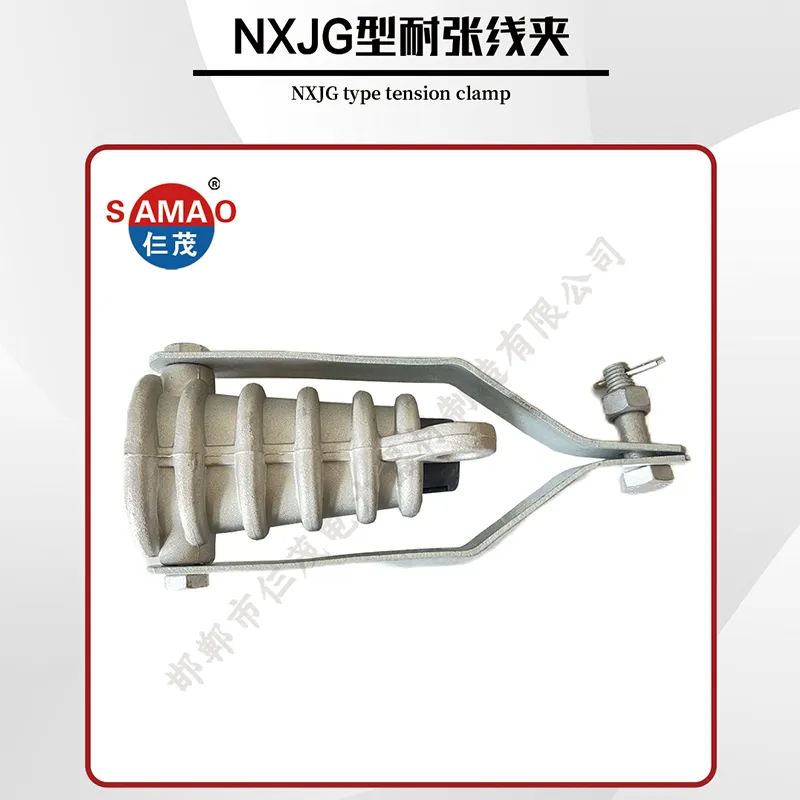
Customized Solutions and Engineering Capabilities
While standard wire cable stop clamp products serve a wide array of general industrial applications, many complex infrastructure projects or specialized operational environments necessitate tailor-made solutions. This is where a manufacturer's customized engineering capabilities become a distinct competitive advantage. Reputable companies offering bespoke wire cable stop clamp designs typically possess advanced in-house design and simulation tools, including CAD (Computer-Aided Design) for precise component modeling and CAE (Computer-Aided Engineering) for simulating structural integrity, stress distribution, and fatigue analysis under anticipated load conditions. This allows for the iterative refinement of designs before physical prototyping, significantly reducing development time and costs. Customization can involve modifying existing designs to accommodate unusual cable diameters or configurations, adapting materials for extreme temperature ranges or highly corrosive atmospheres, or integrating specific mounting interfaces to ensure seamless compatibility with existing structures. For instance, an offshore drilling platform might require a tension lock clamp made from super duplex stainless steel with a specialized coating to resist chlorides and galvanic corrosion, along with a custom base plate for integration into unique rig designs. Similarly, a high-voltage direct current (HVDC) transmission line traversing diverse terrains might demand a strain clamp for overhead line with enhanced vibration dampening characteristics and specific electrical insulation properties not found in standard offerings.
The process of developing a customized wire cable stop clamp typically involves close collaboration between the client's engineering team and the manufacturer's design specialists. This co-creation approach ensures that all unique operational parameters, environmental stressors, regulatory requirements, and installation constraints are thoroughly addressed. The manufacturer's expertise in material selection, manufacturing processes (e.g., precision forging for high strength, specialized casting for complex shapes, multi-axis CNC machining for intricate details), and surface treatments is crucial in translating theoretical designs into tangible, high-performance products. Furthermore, their ability to perform specialized testing, beyond standard protocols, such as accelerated aging tests, specific chemical resistance tests, or dynamic load cycling to simulate real-world conditions, provides critical validation for custom solutions. For instance, a bespoke cable relief clamp for a critical aerospace application might undergo rigorous fatigue testing cycles exceeding millions of repetitions, far beyond typical industry standards. The engineering capabilities extend to optimizing the clamp's design for easier installation and maintenance, potentially through modular components, captive fasteners, or specialized tools. Investing in customized wire cable stop clamp solutions from a capable manufacturer offers distinct advantages: it ensures perfect fit and optimal performance, extends product lifespan by precisely matching environmental demands, enhances safety by addressing specific load conditions, and ultimately contributes to the long-term cost-effectiveness and operational resilience of critical infrastructure projects. This level of tailored engineering support positions the manufacturer as a strategic partner, not just a supplier.
Real-World Application Cases and Success Stories
The true measure of a wire cable stop clamp's efficacy lies in its performance in demanding, real-world applications. Across diverse industries, high-quality clamps have been instrumental in enabling critical infrastructure projects and ensuring operational continuity. One compelling case involves a major North American utility provider undertaking a grid modernization project. Facing challenges with aging infrastructure and increased demand, they required robust strain clamp for overhead line solutions capable of withstanding severe ice storms and high winds prevalent in their service area. After a rigorous selection process, they partnered with a manufacturer known for its high-strength forged steel clamps, galvanized to ANSI A153 standards. The installation across thousands of kilometers of new transmission lines demonstrated a significant reduction in cable sag and improved resistance to extreme weather events, leading to a 30% decrease in storm-related outages over the subsequent five years compared to previous infrastructure. This translated into substantial cost savings from reduced repair work and enhanced public confidence in grid reliability. Another notable example comes from a large petrochemical complex in the Middle East. This facility required wire cable stop clamp solutions for securing instrument and control cables within highly corrosive environments, where exposure to sulfur compounds and extreme temperatures was constant. Standard clamps corroded rapidly, leading to frequent replacements and operational disruptions.
A custom solution was engineered, utilizing specialized 316L stainless steel clamps with an additional fluoropolymer coating, designed to withstand concentrated acid vapor exposure and temperatures up to 150°C. Since their installation three years ago, these specialized clamps have shown no signs of degradation, significantly reducing maintenance cycles and improving safety protocols by ensuring uninterrupted data flow from critical sensors. This proactive investment in high-performance wire cable stop clamp technology prevented potential costly downtime and environmental hazards. In the telecommunications sector, a leading European broadband provider faced issues with aerial fiber optic cables experiencing tension damage at attachment points due to prolonged vibration from traffic and wind. They adopted a new series of cable relief clamp designs that incorporated elastomeric inserts and a specialized interlocking mechanism. These clamps effectively dissipated vibration energy and distributed tension more evenly along the cable, protecting the delicate optical fibers. Post-implementation data showed a 40% reduction in cable damage reports and a significant improvement in network uptime across challenging urban and rural routes. These case studies underscore the transformative impact of selecting the right wire cable stop clamp. They demonstrate that while seemingly small components, their robust design, material integrity, and precise engineering are foundational to the safety, efficiency, and longevity of vast, complex industrial systems, directly contributing to operational excellence and substantial economic benefits through reduced failures and maintenance.
Quality Assurance, Certifications, and Compliance ( - Authoritativeness)
For B2B procurement in critical infrastructure, the assurance of quality, adherence to certifications, and compliance with industry standards for any wire cable stop clamp is not just a preference but a fundamental requirement. These elements collectively establish a manufacturer's authority and trustworthiness in the market. A reputable manufacturer will possess comprehensive quality management systems, typically certified to ISO 9001. This global standard ensures that a company consistently provides products and services that meet customer and regulatory requirements, and continuously improves its processes. Beyond general quality management, specific product certifications are paramount. For instance, clamps used in electrical power transmission must comply with ANSI C119.4 for connectors and clamps, and potentially IEC 61284 for overhead lines, ensuring they meet rigorous electrical and mechanical performance criteria, including pull-out strength, slip strength, and resistance to short-circuit currents. Manufacturers of strain clamp for overhead line often submit their products to independent testing laboratories to validate these claims, providing transparent test reports to clients.
Material certifications are equally vital. For example, steel components should comply with ASTM A153 for hot-dip galvanization specifications, ensuring adequate corrosion protection. Stainless steel components should be traceable to specific grades like 304 or 316 and accompanied by mill test certificates (MTCs) confirming their chemical composition and mechanical properties. Manufacturers often highlight their long-standing service history – e.g., "Over 20 years of expertise in cable accessories" – and list key strategic partnerships with leading utility companies or engineering firms, which serves as a powerful testament to their reliability and industry acceptance. Furthermore, the commitment to environmental compliance (e.g., ISO 14001 certification) and adherence to ethical sourcing practices (e.g., responsible mineral sourcing) can further build trust. The transparency in providing detailed technical data sheets, performance curves, and test reports (e.g., salt spray test results, ultimate tensile strength reports, vibration fatigue data) reinforces a manufacturer's authoritative stance. Companies that actively participate in industry forums, contribute to standard-setting bodies, and openly share their research findings demonstrate their deep expertise and commitment to advancing the field of cable management solutions. This meticulous approach to quality, certification, and transparency is what differentiates an authoritative provider of wire cable stop clamp solutions from a mere vendor, providing vital reassurance for high-stakes industrial applications where failure is not an option.
Customer Support, Warranty, and Delivery ( - Trustworthiness)
Beyond product specifications and certifications, the trustworthiness of a wire cable stop clamp manufacturer is significantly defined by its commitment to comprehensive customer support, robust warranty provisions, and reliable delivery logistics. For B2B clients, especially those managing large-scale projects, efficient post-sales service can be as critical as the product itself. A trustworthy manufacturer provides dedicated technical support teams accessible via multiple channels – phone, email, and potentially online portals – ensuring that queries related to installation, performance, or troubleshooting are addressed promptly by knowledgeable engineers. This proactive support minimizes downtime and ensures that projects stay on schedule, preventing costly delays. Furthermore, a clear and comprehensive product warranty is a cornerstone of trust. Reputable manufacturers typically offer warranties ranging from 5 to 25 years on their wire cable stop clamp products, depending on the material and application, covering defects in materials and workmanship. This warranty period reflects the manufacturer's confidence in the longevity and durability of their products and provides financial protection against premature failures. The terms of the warranty, including coverage scope, claims process, and redress mechanisms, should be transparent and easily accessible, providing peace of mind to the client.
Delivery cycle management is another critical aspect of trustworthiness. In complex infrastructure projects, delays in component delivery can have cascading negative impacts on project timelines and budgets. Leading manufacturers maintain efficient supply chain management systems, transparent production schedules, and robust logistics networks to ensure timely delivery of wire cable stop clamp orders. They often provide real-time tracking, reliable lead times, and can accommodate expedited shipping for urgent requirements. For large or custom orders, a manufacturer might offer phased deliveries synchronized with project milestones. Moreover, the availability of spare parts and replacement components throughout the product's long lifecycle further enhances trustworthiness, ensuring that maintenance and repairs can be conducted efficiently without sourcing issues. Some manufacturers also offer training programs for installation teams, ensuring that their products are installed correctly to achieve optimal performance and lifespan, thereby preventing issues stemming from improper handling. In essence, a manufacturer's commitment to delivering not just a product, but a complete solution encompassing expert guidance, reliable assurances, and efficient logistics, builds an unparalleled level of trustworthiness. This holistic approach ensures that the investment in a wire cable stop clamp yields maximum operational value and long-term reliability for the client's critical infrastructure.
Frequently Asked Questions (FAQ) about Wire Cable Stop Clamps
Q1: What are the primary types of wire cable stop clamp and their main uses?
The primary types of wire cable stop clamp typically include Tension Clamps (also known as Strain Clamps or Dead-End Clamps), Suspension Clamps, and various specialized clamps like Mid-Span clamps or Damping clamps. Tension Clamps are designed for dead-ending conductors, absorbing the full mechanical tension of the line, and are crucial for securing cables at termination points or within long spans where extreme tension is present, such as a strain clamp for overhead line. They are engineered to provide maximum grip strength without damaging the cable conductors. Suspension Clamps, on the other hand, are used to support overhead conductors from utility poles or towers, allowing the cable to "hang" while maintaining its position. They are designed to provide support while minimizing stress concentration on the conductor and often incorporate features for flexibility and vibration dampening. Specialized clamps serve niche functions, such as mid-span clamps for jointing or branching lines, or damping clamps to mitigate vibration effects in long spans. The choice depends entirely on the specific mechanical and environmental requirements of the cable's application, including load, cable material, diameter, and environmental conditions. Each type of clamp plays a distinct and critical role in ensuring the stability, safety, and longevity of cable infrastructure across power, telecommunications, and industrial sectors.
Q2: How does material selection impact the performance and lifespan of a wire cable stop clamp?
Material selection profoundly impacts the performance and lifespan of a wire cable stop clamp. The most common materials are galvanized steel, various grades of stainless steel (e.g., 304, 316), and aluminum alloys. Galvanized steel clamps offer excellent strength and are protected by a zinc coating against general atmospheric corrosion, making them cost-effective for many outdoor applications. However, in highly corrosive environments like coastal areas or chemical plants, stainless steel (particularly 316, which contains molybdenum for enhanced chloride resistance) is preferred due to its superior corrosion resistance and durability. Aluminum alloys are chosen for their lightweight properties, good conductivity, and resistance to oxidation, making them ideal for specific electrical applications or where weight reduction is critical, such as in certain overhead line configurations for strain clamp for overhead line uses. The specific mechanical properties of each material, such as tensile strength, yield strength, and fatigue resistance, dictate the clamp's load-bearing capacity and resilience under dynamic stresses. For example, a forged steel tension lock clamp will typically offer higher ultimate tensile strength than a cast aluminum one. Additionally, the interaction between the clamp material and the cable material (e.g., preventing galvanic corrosion between dissimilar metals) is a critical design consideration that directly influences long-term performance and lifespan, ensuring the clamp can withstand its operational environment for decades.
Q3: What are the critical factors to consider when choosing a wire cable stop clamp for a specific industrial application?
Choosing the right wire cable stop clamp involves considering several critical factors to ensure optimal performance, safety, and longevity. Firstly, the cable type and diameter are paramount; the clamp must precisely match the cable to ensure a secure grip without causing damage. Secondly, the load requirements (e.g., tensile strength, dynamic loads, vibration) dictate the necessary mechanical strength of the clamp. For high-tension lines, a robust tension lock clamp with a high ultimate tensile strength is essential. Thirdly, the environmental conditions (e.g., temperature extremes, humidity, exposure to corrosive agents like salt, chemicals, or UV radiation) will determine the appropriate material and surface treatment for corrosion resistance. Fourthly, installation requirements and methods should be considered; some clamps are designed for easy manual installation, while others require specialized tools or trained personnel. Fifthly, regulatory compliance and industry standards specific to the application (e.g., ANSI for utilities, marine certifications, explosion-proof ratings) are non-negotiable. Finally, manufacturer reputation, warranty, and technical support play a crucial role, as these factors influence the long-term reliability and support for the product. Thoroughly evaluating these aspects ensures the selection of a wire cable stop clamp that is fit for purpose and provides enduring value.
Q4: How do wire cable stop clamp contribute to energy efficiency and corrosion prevention in industrial systems?
High-quality wire cable stop clamp solutions contribute to energy efficiency and corrosion prevention in several indirect yet significant ways. In terms of energy efficiency, by ensuring a secure and stable connection, particularly in power transmission and distribution lines (where a strain clamp for overhead line is crucial), these clamps prevent cable sag and maintain optimal line tension. This minimizes conductor movement, which can otherwise lead to micro-fractures, increased resistance, and subsequent energy losses due to heat dissipation. A stable connection also reduces the risk of intermittent contacts or partial disconnections, which can cause power fluctuations and inefficiencies. Furthermore, by preventing mechanical failure and maintaining system integrity, they reduce the need for emergency repairs and associated energy consumption for deploying maintenance crews and equipment. Regarding corrosion prevention, the use of appropriate materials (e.g., hot-dip galvanized steel, stainless steel, or specialized coatings) in wire cable stop clamp designs is critical. These materials create a robust barrier against environmental degradation from moisture, chemicals, and pollutants. By resisting corrosion, the clamps maintain their structural integrity and electrical conductivity over decades, preventing the need for frequent replacements. This longevity reduces the environmental impact of manufacturing new parts and the energy consumed in their installation. Ultimately, well-engineered clamps contribute to the long-term operational stability and efficiency of critical infrastructure by preventing costly failures and ensuring sustained performance in demanding environments.
Conclusion: The Indispensable Role and Future of Wire Cable Stop Clamps
The wire cable stop clamp, a seemingly unassuming component, stands as an indispensable cornerstone of modern industrial infrastructure. Its critical function in securely anchoring and managing cables is fundamental to the safety, reliability, and efficiency of systems across diverse sectors, from power utilities and telecommunications to oil & gas and construction. As detailed, the advanced manufacturing processes, rigorous material selection, and adherence to international standards ensure that these clamps can withstand extreme mechanical stresses, environmental corrosives, and dynamic loads for decades. The comprehensive technical parameters, from rated tensile strength to operating temperature ranges, are not just specifications but guarantees of performance tailored to specific application demands. The versatility of these clamps is evident in their wide array of application scenarios, each requiring nuanced design and material considerations, whether it's a robust strain clamp for overhead line in a harsh climate or a specialized cable relief clamp for vibration-prone environments. The technical advantages, including superior mechanical stability, enhanced corrosion resistance, and streamlined installation, collectively translate into significant operational benefits, reducing downtime, extending asset lifespan, and ultimately contributing to overall system cost-effectiveness and safety.
The selection of a manufacturer for wire cable stop clamp solutions requires a meticulous evaluation of their engineering expertise, manufacturing quality, customization capabilities, and unwavering commitment to certifications and compliance. The ability to provide bespoke solutions for unique project challenges further underscores a manufacturer's value as a strategic partner rather than just a supplier. Real-world application cases consistently demonstrate the tangible benefits of investing in high-quality clamping solutions, illustrating how they mitigate risks, improve network uptime, and enhance the longevity of critical infrastructure. Furthermore, a manufacturer's dedication to robust customer support, transparent warranty policies, and efficient delivery logistics builds indispensable trust, ensuring that clients receive not just products, but reliable, long-term operational partners. Looking ahead, the evolution of wire cable stop clamp technology is poised to integrate smart features, such as embedded sensors for real-time tension monitoring and predictive maintenance, further enhancing operational intelligence and system resilience. As industries continue to expand and demand higher performance from their infrastructure, the role of intelligently designed and impeccably manufactured wire cable stop clamp solutions will only grow in importance, solidifying their position as essential components driving the reliability and sustainability of our connected world.
Industry Insights and Further Reading
The ongoing research and development in cable accessory technology underscore the dynamic nature of this field. According to analyses presented in the "Journal of Power and Energy Systems," advancements in composite materials are increasingly being explored for lighter, yet stronger wire cable stop clamp designs, particularly for long-span transmission lines where weight reduction can significantly impact tower design and cost.
Discussions within the "Global Infrastructure Development Forum" highlight the growing emphasis on modular and easily replaceable components, including tension lock clamp systems, to facilitate faster maintenance and upgrades in aging grid infrastructure, thereby reducing operational expenditure and improving overall system resilience.
A recent white paper published by the "International Council on Large Electric Systems (CIGRE)" emphasizes the critical need for advanced strain clamp for overhead line designs that can withstand increasingly severe climate events, advocating for enhanced fatigue life testing and real-time condition monitoring integration to prevent failures.
Experts contributing to "Structural Engineering International" frequently discuss the innovations in cable relief clamp technology used in bridge construction, focusing on designs that can accommodate thermal expansion and contraction while providing consistent load distribution and vibration control, crucial for the long-term integrity of civil engineering marvels.
-
Suspension Clamps: The Key to Secure Electrical InstallationsNewsAug.11,2025
-
Suspension Clamp & Strain Clamp: Your Ultimate Electrical SolutionNewsAug.11,2025
-
Protect Your Home and Data: Essential Earthing SolutionsNewsAug.11,2025
-
Power Cable Accessories Manufacturers GuideNewsAug.11,2025
-
Master Your Electrical Connections with Top-Notch Clamps and ConnectorsNewsAug.11,2025
-
Clamps for Every Need: Secure, Reliable, and Ready to GoNewsAug.11,2025
-
Strong Hold with Constant Tension Hose ClampsNewsAug.08,2025

